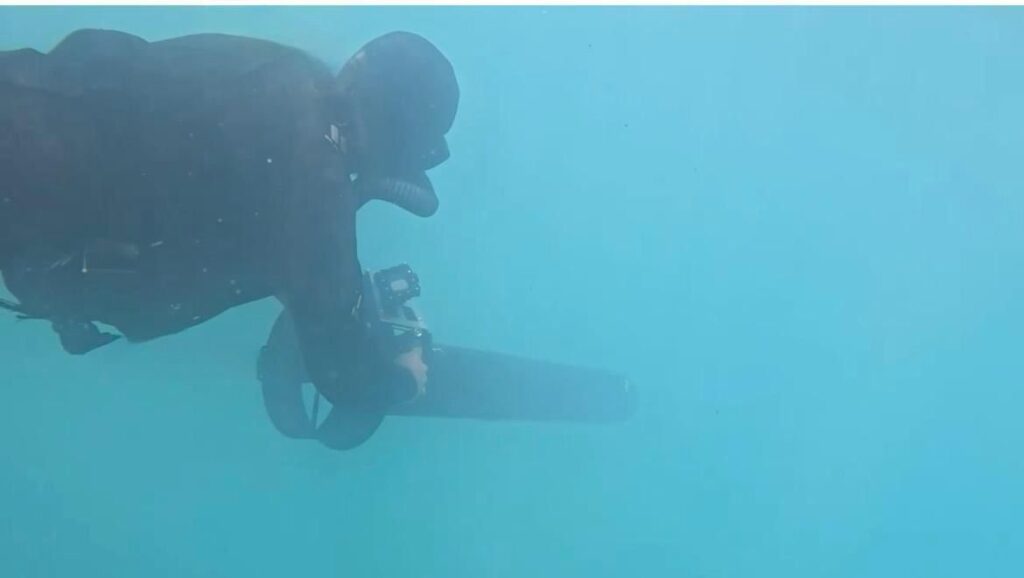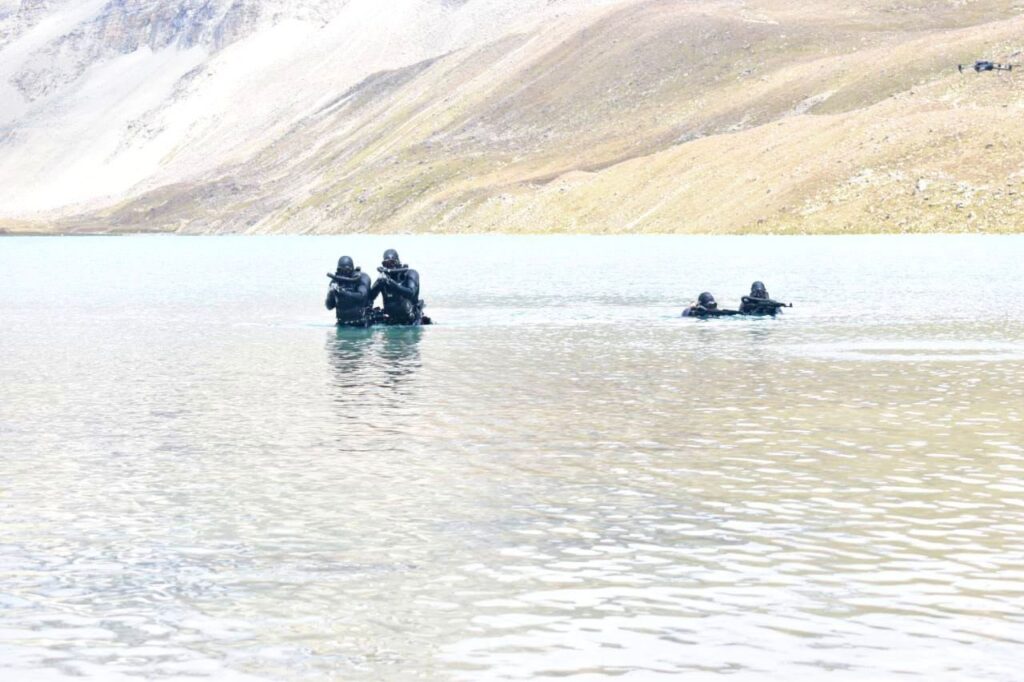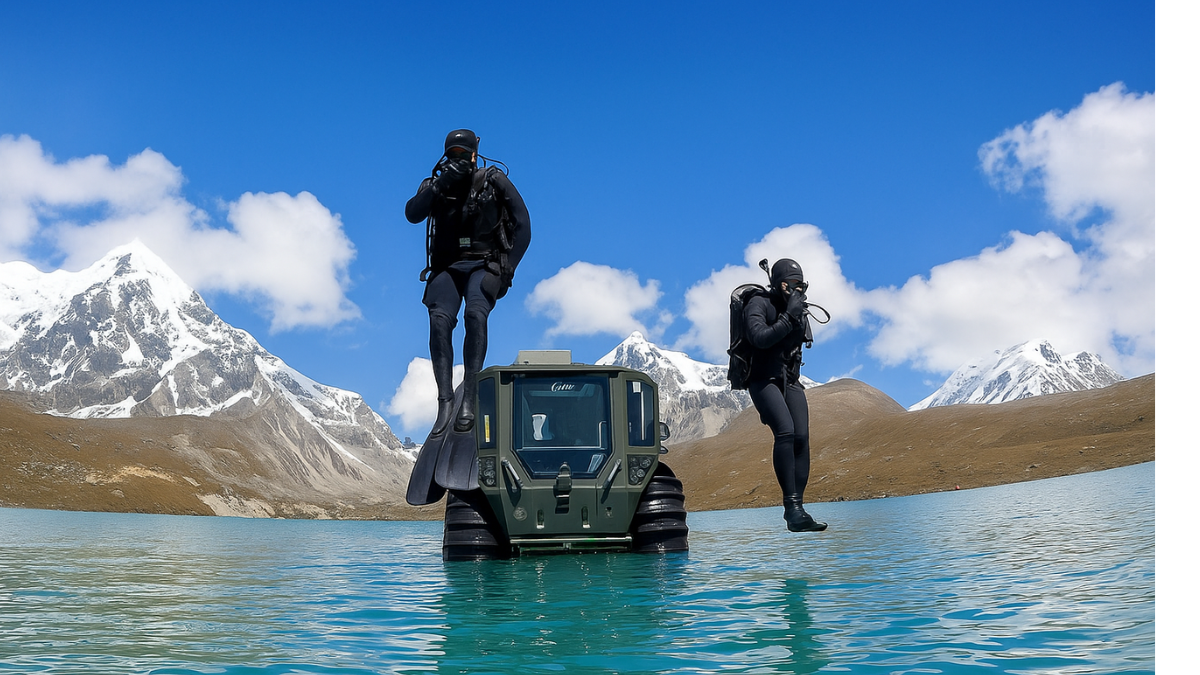The Indian Army PARA (Special Forces) and the Indian Navy MARCOS (Marine Commandos) have completed a challenging High-Altitude Combat Diving Training exercise in Sikkim. This unique training took place at an altitude of 17,000 feet between 30 August and 05 September 2025, making it one of the toughest diving missions ever held in the Himalayas.
The training included several specialised activities. Soldiers performed Open Circuit Air Diving, which means using a regular oxygen tank that releases bubbles while breathing underwater. They also practiced Closed Circuit Oxygen Diving, a silent diving method where no bubbles are released, making it useful for secret or stealth missions. The commandos went for dives up to 17 metres deep in extremely cold mountain waters, where the temperature can quickly drain a diver’s energy. Another test was Combat Night Diving, which means diving in complete darkness to simulate dangerous missions that may be carried out at night.

Conducting High-Altitude Combat Diving Training in Sikkim was especially tough because of the rarefied air and freezing water. High altitude means thin air with less oxygen, which makes even normal breathing difficult, let alone performing heavy physical tasks. On top of that, icy water makes the body numb and slows movement. Despite these challenges, both the PARA (SF) and MARCOS displayed courage, skill, and adaptability, showing that they are prepared for real-life missions in any environment.
The aim of this training was not only to improve diving skills but also to prepare India’s elite forces for future battlefields, where conditions are often unpredictable. Soldiers need to be ready to operate in the snowy Himalayas, in deserts, or under the sea, and such exercises ensure that they are versatile and mission-ready. Another important aspect is jointmanship, which means teamwork between different defence forces. When the Army and Navy train together, they learn to coordinate better and combine their strengths, which is vital for joint operations.

The Team Commander highlighted the importance of this exercise by saying, “Training in these extreme conditions tests every aspect of a soldier’s endurance, skill and mental strength. It ensures that when called upon, our teams can operate effectively in any environment, no matter how harsh or demanding. This exercise reflects the spirit of jointmanship and the commitment of our elite forces to remain prepared for every challenge.” His words underline that such training is about more than just diving; it is about testing soldiers’ limits and ensuring they can fight and survive in any condition.
In simple words, the High-Altitude Combat Diving Training in Sikkim proved that India’s soldiers are strong enough to take on nature’s toughest challenges. Whether it is icy Himalayan lakes, the deep ocean, or unpredictable battlegrounds, the PARA (SF) and MARCOS are always ready to protect the nation.
Also Read: Tourism Resumes in North Sikkim: Yumthang Valley and Zero Point Welcome Visitors from Today

